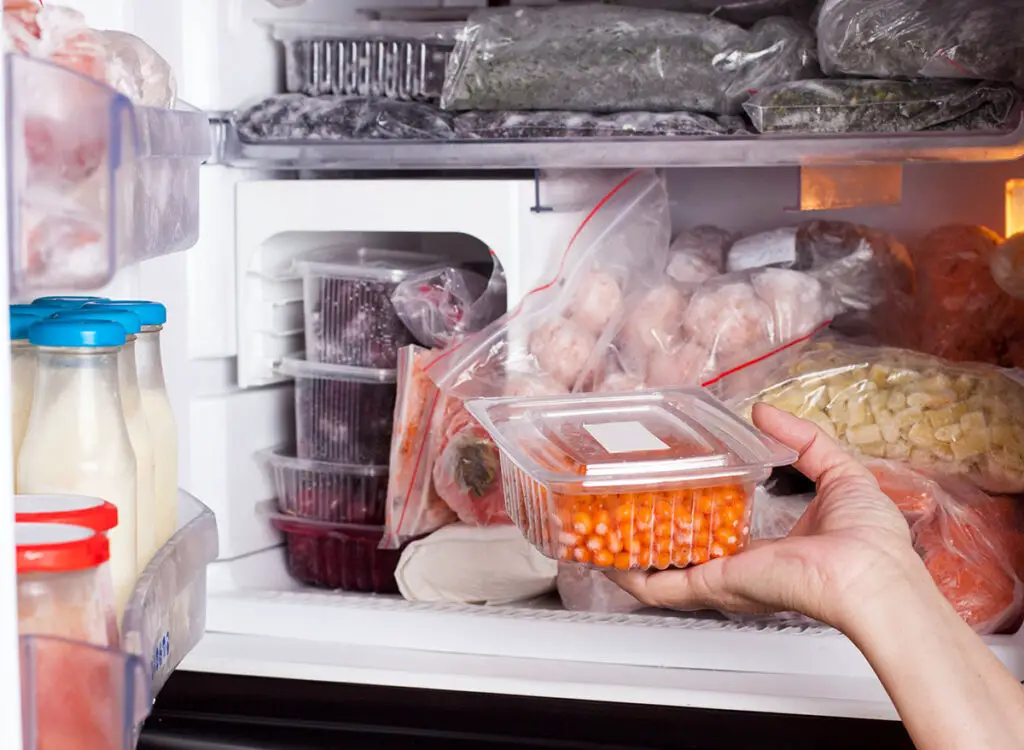I’ve always been on the lookout for ways to save a few extra bucks, and I recently stumbled upon a game-changing discovery – “The Art of Freezing and Preserving Food to Save Money.” This revolutionary product promises to unlock the secrets to a frugal lifestyle by teaching you how to freeze and preserve food effectively. With the rising cost of groceries, learning this ancient art could be the key to stretching your budget further than you ever thought possible. Say goodbye to wasting money on spoiled produce and hello to delicious, budget-friendly meals year-round. So, if you’re ready to embark on a money-saving adventure in the kitchen, this article is your essential guide to mastering “The Art of Freezing and Preserving Food to Save Money.”
The Art of Freezing and Preserving Food to Save Money
As a frugal individual, I have discovered the incredible benefits of freezing and preserving food. Not only does this practice help me save money, but it also allows me to enjoy fresh, homemade meals all year round. In this comprehensive guide, I will share with you the planning, preparation, and best practices for freezing food, as well as tips and tricks to optimize freezer storage, thaw and reheat frozen food, preserve food using other techniques, extend shelf life with proper storage, creatively use leftover ingredients, and budget-friendly strategies. Additionally, I will emphasize the importance of ensuring safety and preventing foodborne illnesses, as well as maximizing flavor and quality. So, let’s dive into the world of freezing and preserving food!
Planning and Preparing for Freezing
Choosing Proper Containers and Packaging Materials
When it comes to freezing food, selecting the right containers and packaging materials is crucial to maintain freshness and prevent freezer burn. I recommend using airtight, freezer-safe containers, such as glass or BPA-free plastic containers with tight-fitting lids. These containers will protect your food from absorbing odors and prevent any leaks or spills in the freezer. Additionally, using freezer bags or vacuum sealers can provide an extra layer of protection by removing excess air and preserving the quality of the food.
Labeling and Dating
To stay organized and avoid confusion, it is essential to label and date the food you are freezing. Use waterproof labels or permanent markers to clearly identify the contents and the date it was frozen. This practice will help you keep track of how long the food has been in the freezer and ensure you prioritize using older items first. Don’t forget to include any special instructions, such as defrosting time or reheating instructions, to make meal preparations easier later on.
Preparing the Food for Freezing
Before freezing your food, it is important to prepare it properly. Start by washing fruits and vegetables thoroughly, removing any dirt or pesticides. Blanching vegetables, such as broccoli or green beans, by quickly boiling or steaming them for a few minutes, can help preserve their color, flavor, and texture. Let the blanched vegetables cool down completely before packaging them for freezing. For meats, poultry, or fish, ensure they are properly trimmed and portioned into suitable sizes for your needs. Remove any excess fat or bones to prevent freezer burn and improve the quality of the final product.
Planning Meals and Recipes to Maximize Freezing Potential
To truly maximize the potential of freezing food, I highly recommend planning meals and recipes in advance. This strategic approach will allow you to utilize your frozen ingredients effectively and minimize waste. Consider batch cooking your favorite recipes, such as soups, stews, or casseroles, and freezing individual portions for quick and easy meals in the future. Another option is to prepare ingredients that can be easily incorporated into multiple dishes, like cooked chicken breast or pre-chopped vegetables. By planning your meals and recipes, you can take full advantage of your frozen food and create a variety of delicious meals without much effort.
Best Practices for Freezing Food
The Role of Temperature and Timing
Maintaining the proper temperature and timing is crucial when it comes to freezing food. To ensure optimal food quality and safety, set your freezer to 0°F (-18°C) or below. This temperature prevents bacterial growth and slows down the enzymatic activity that can lead to spoilage. It is important to freeze your food as quickly as possible to minimize the formation of large ice crystals, which can affect the texture and moisture content. Remember, the sooner you freeze your food after preparation, the better the overall quality will be.
Understanding Freezer Burn and Prevention Techniques
Freezer burn is a common occurrence when food is improperly stored in the freezer for an extended period. It appears as dry, discolored patches on the surface of the food and can negatively impact its flavor and texture. To prevent freezer burn, make sure your food is properly packaged in airtight containers or freezer bags, removing as much air as possible. If using containers, consider adding an extra layer of plastic wrap directly on the food’s surface to minimize air exposure. Proper packaging and sealing will help maintain the moisture content and prevent the formation of ice crystals, ensuring your food stays fresh and tasty.
Avoiding Texture and Flavor Changes
While freezing helps in preserving food, certain ingredients can undergo changes in texture and flavor when frozen. This is especially true for delicate items like fresh herbs or leafy greens. To avoid texture changes, blanching vegetables prior to freezing, as mentioned before, can help retain their crispness. For berries or fruits that are prone to becoming mushy, consider freezing them in a single layer on a baking sheet before transferring them to a freezer bag. This prevents clumping and preserves their individual texture. When it comes to flavor, herbs and spices tend to lose some of their potency when frozen. To maintain optimal flavor, consider adding herbs and spices during the reheating stage of your dishes.
Freezing Dairy, Eggs, and Produce
Dairy products and eggs can also be successfully frozen, although some precautions should be taken. Milk, cheese, and yogurt can experience changes in texture when thawed, so it is best to use them in cooked dishes after freezing. For eggs, remove them from their shells and whisk them lightly before freezing in airtight containers or ice cube trays. Remember to label the containers with the equivalent of one egg, making it easier to measure for your recipes. When freezing produce, such as berries, peas, or corn, it is important to blanch them quickly before freezing to preserve their color, texture, and flavor.
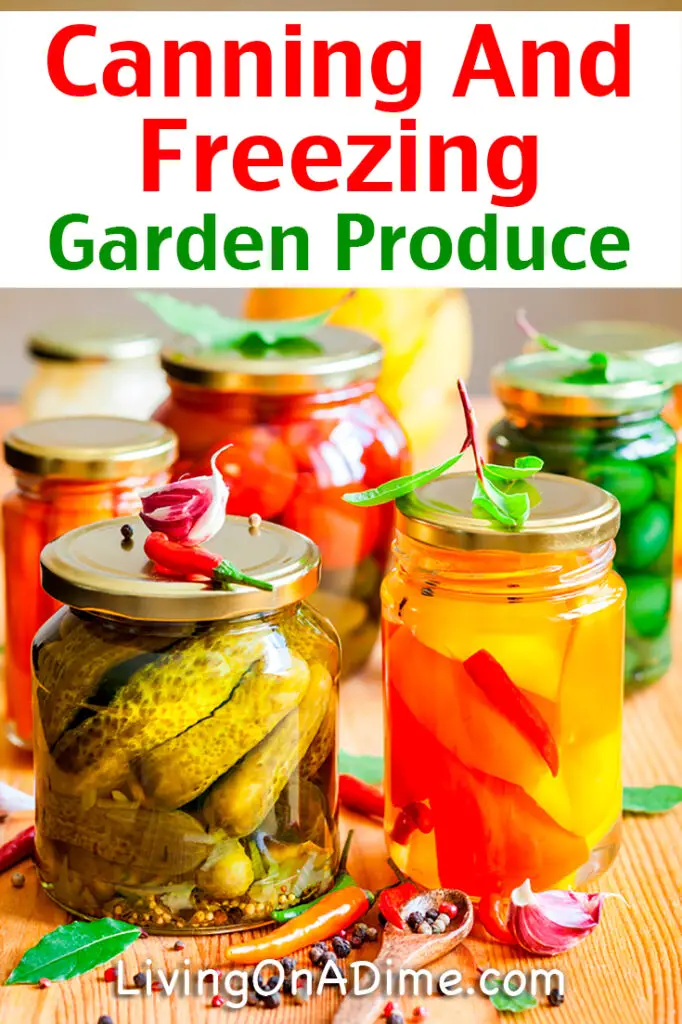
Optimizing Freezer Storage Space
Arranging Food for Easy Access and Inventory Management
Optimizing your freezer storage space goes beyond neatly stacking containers. Arrange your frozen food in a way that allows for easy access and efficient inventory management. Start by grouping similar items together, such as fruits, vegetables, or proteins. This will not only make it easier to locate specific items but also help you keep track of your inventory. Make use of clear bins or baskets to contain smaller items, preventing them from getting lost or buried beneath larger packages. To further enhance organization, create a freezer inventory list, noting down the contents and their freeze dates. This will help you stay on top of what you have and avoid unnecessary purchases.
Stacking and Binning Techniques
To maximize freezer space, stacking and binning techniques can be incredibly useful. When stacking containers, remember to leave a small gap between each one to allow cold air circulation. This will ensure the food freezes and thaws evenly. Consider using stackable or nesting containers to optimize vertical space utilization. For smaller items, like bags of frozen vegetables or individually packaged meals, use clear plastic bins or wire baskets. Not only will this prevent items from getting lost in the freezer abyss, but it will also make it easier to grab what you need without causing a chaotic mess.
Utilizing Freezer Bags and Vacuum Sealers
While we touched upon using freezer bags and vacuum sealers earlier, it is worth emphasizing their benefits for optimizing freezer storage space. Freezer bags are flexible and can conform to the shape of the food, which allows for efficient use of space. They are also great for storing liquids, such as soups or sauces, as they can be laid flat for easy stacking. Vacuum sealers, on the other hand, remove excess air, reducing the size of the packaged food and preventing freezer burn. By removing the air, you can tightly pack your freezer with vacuum-sealed bags, maximizing every inch of available space.
Thawing and Reheating Frozen Food
Safe Thawing Methods
Thawing frozen food safely is essential to prevent bacterial growth and maintain the quality of the food. The safest method is to thaw in the refrigerator, allowing for a slow and controlled thawing process. Simply transfer the frozen food from the freezer to the refrigerator and let it thaw overnight. This method is ideal for larger items or raw meat, poultry, and fish. For a quicker thaw, you can use the cold-water thawing method by placing the frozen food in a waterproof bag and submerging it in cold water. Change the water every 30 minutes to ensure it remains cold and continue until the food is thawed. Avoid thawing at room temperature, as this can lead to increased bacterial growth and compromise food safety.
Maintaining Quality during Thawing and Reheating
Maintaining the quality of your frozen food doesn’t end with thawing; it continues during the reheating process. When reheating, ensure that the food reaches a safe internal temperature to kill any potential bacteria. Use a food thermometer to ensure that the center of the food reaches at least 165°F (74°C). To retain moisture and prevent drying out, cover dishes with a lid or wrap them tightly with foil. Stirring occasionally also helps distribute the heat evenly and prevent uneven reheating. When it comes to sauces or liquid-based dishes, reheating slowly over low heat can help avoid scorching or boiling over. By following these guidelines, you can enjoy the same quality and taste as when the food was first prepared.
Adapting Recipes for Previously Frozen Ingredients
One of the greatest advantages of freezing food is being able to use it in a variety of recipes anytime you want. When incorporating previously frozen ingredients into your dishes, it is important to make adjustments. Frozen ingredients may release more liquid when cooked, so consider adjusting the liquid content of your recipes accordingly. For instance, if you are using frozen vegetables in a stir-fry, you may need to reduce the amount of sauce or broth to compensate for the extra moisture. Additionally, in recipes that call for browning or searing, be mindful that previously frozen ingredients may take longer to develop the desired color. By adapting your recipes, you can successfully incorporate frozen ingredients, resulting in delicious meals.
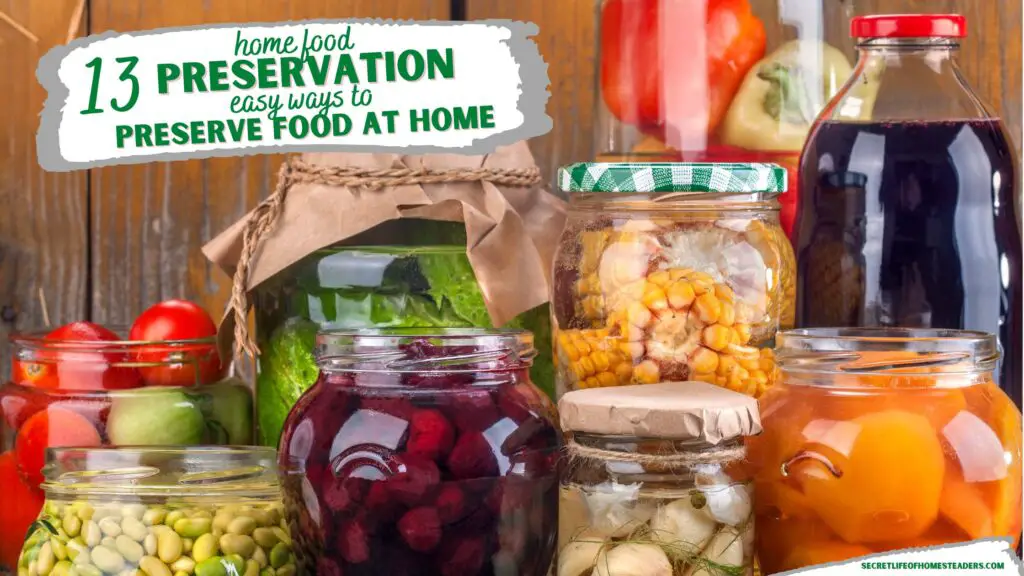
Preserving Food with Other Techniques
Canning and Pickling
Beyond freezing, canning and pickling are effective methods of preserving food for future use. Canning involves packing food in jars, sealing them to prevent spoilage, and then processing them in a water bath or pressure canner. This technique is particularly suitable for high-acid foods, like fruits, tomatoes, and pickles. On the other hand, pickling involves immersing food in a brine or vinegar solution, often infused with herbs and spices, to enhance flavor and preservation. Commonly pickled foods include cucumbers, onions, beets, and peppers. Both canning and pickling offer a wide array of flavors and can help you preserve seasonal produce beyond their peak season.
Dehydrating and Jerky Making
Dehydrating is an ancient preservation technique that removes the moisture from food, inhibiting the growth of bacteria, yeasts, and molds. It not only extends shelf life but also concentrates flavors, resulting in a delicious and portable snack. You can invest in a food dehydrator or use your oven to dehydrate fruits, vegetables, herbs, and even meats. Homemade jerky is a great example of dehydrated meat. By marinating thinly sliced meat in a flavorful mixture and then dehydrating it, you can enjoy a protein-packed snack that can last for months. Experiment with various spices and flavors to create your own signature jerky.
Fermentation
Fermentation is another preservation technique that not only extends shelf life but also adds complexity and depth of flavor to various foods. It involves allowing beneficial bacteria or yeasts to break down sugars and produce lactic acid or alcohol, creating an acidic or alcoholic environment that inhibits the growth of harmful bacteria. Fermented foods, like sauerkraut, kimchi, yogurt, and kombucha, provide numerous health benefits and can be easily made at home. By fermenting vegetables, you not only prolong their storage life but also enhance their nutritional value while introducing unique tangy and sour flavors to your palate.
Infusing Oils and Vinegars
Infusing oils and vinegars is a simple and creative way to preserve and enhance flavors. By infusing herbs, spices, fruits, or vegetables into oils or vinegars, you can extend their shelf life and create unique culinary creations. Infused oils are great for cooking, drizzling, or dipping, while flavored vinegars add depth to dressings, marinades, or as a delicious addition to any recipe calling for vinegar. From garlic-infused olive oil to strawberry-infused balsamic vinegar, the possibilities are endless. Simply combine your chosen ingredients and allow them to steep in the oil or vinegar until the desired flavor is achieved, then strain and store for future use.
Extend Shelf Life with Proper Storage
Creating Ideal Conditions in your Pantry or Cupboard
Proper storage conditions in your pantry or cupboard are essential to extend the shelf life of various staple ingredients. Ideally, keep your pantry or cupboard cool, dark, and dry, as heat, light, and moisture can accelerate spoilage. Aim for a temperature of around 50°F to 70°F (10°C to 21°C) to preserve the quality of the ingredients. Avoid storing items near sources of heat, such as ovens or stoves. Additionally, keep your pantry well-organized, with items easily visible and accessible, to prevent items from being forgotten and ultimately wasted.
Tips for Storing Staple Ingredients
Staple ingredients, such as flour, rice, pasta, and dried beans, form the foundation of many meals. To optimize their shelf life, store them in airtight containers or jars to keep out moisture and pests. For flour, consider transferring it to a sealable plastic bag before storing it in a container to protect against potential weevils or bugs. Keep these ingredients in a cool, dry place away from sunlight to avoid their quality deteriorating over time. It is also a good practice to rotate older stock to the front and use it before newer purchases.
The Role of Airtight Containers and Moisture Control
Airtight containers play a critical role in preserving the freshness and quality of pantry items. They prevent oxygen and moisture from causing spoilage and maintain the flavors and aromas of the ingredients. When storing items like spices, nuts, or dried fruits, consider using smaller airtight containers. This will allow you to open only the necessary amount, minimizing exposure to air and moisture. Additionally, you can incorporate moisture-absorbing packets or desiccants into your containers to further control humidity levels and extend the shelf life of your ingredients.
Maximizing Shelf Life of Common Pantry Items
Knowing how to maximize the shelf life of common pantry items is a valuable skill. Here are a few tips:
- Sugar: Store in an airtight container away from heat and moisture to prevent clumping.
- Salt: Keep salt in a dry place and avoid exposing it to humidity, as it can cause clumping.
- Spices: Whole spices have a longer shelf life than ground spices. Store them in airtight containers away from direct sunlight and heat.
- Herbs: Dried herbs can last up to a year when stored in airtight containers away from moisture and sunlight. To extend their life, you can also freeze herbs in ice cube trays with a little water or olive oil.
- Nuts and seeds: Store these items in airtight containers in a cool, dark place or in the refrigerator to prevent rancidity.
- Dried beans and legumes: Keep them in airtight containers away from moisture and direct sunlight to avoid spoilage.
By following these guidelines, you can significantly extend the shelf life of your pantry staples and reduce unnecessary waste.
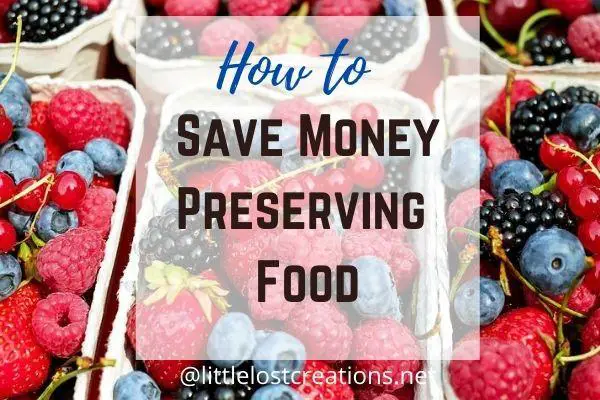
Creative Uses for Leftover Ingredients
Repurposing Frozen Vegetables and Fruits
Leftover frozen vegetables and fruits offer endless possibilities for creating delicious meals. Repurpose frozen vegetables by incorporating them into stir-fries, soups, or casseroles. They can add vibrant colors and flavors to your dishes while providing essential nutrients. Frozen fruits are perfect for smoothies, desserts, or mixed into yogurt or oatmeal for a refreshing and nutritious boost. You can also blend them into homemade fruit sauces or fillings for pies and pastries. Don’t let your leftover frozen ingredients go to waste; let your culinary creativity shine and transform them into something amazing.
Making a Meal Out of Scraps and Leftovers
Another cost-saving and creative way to utilize leftover ingredients is by making a meal out of scraps and leftovers. Turn vegetable scraps, bones, and meat trimmings into flavorful homemade stocks or broths. These can serve as the base for nourishing soups, stews, or risottos. Leftover cooked meat can be transformed into delicious sandwiches, salads, or wraps. Consider combining various odds and ends, like small amounts of vegetables and leftover grains, to make a hearty and nutritious fried rice or grain bowl. By thinking outside the box, you can create new and exciting meals while minimizing waste.
Incorporating Frozen Proteins in Quick and Easy Dishes
Frozen proteins, such as chicken breast, fish fillets, or shrimp, can be a lifesaver on busy days when you need a quick and easy meal. Incorporate these ingredients into stir-fries, pasta dishes, or sheet pan dinners for a protein-packed meal in no time. Utilize marinades or seasoning blends to add flavor and enhance the taste of the frozen proteins. By stocking up on frozen proteins, you can always have a versatile ingredient on hand to create a satisfying and nutritious meal.
Budget-Friendly Tips and Tricks
Bulk Buying and Freezing
One of the best ways to save money on groceries is by buying in bulk and freezing the excess. Look for sales or discounts on your favorite ingredients and purchase larger quantities. Divide the items into portion sizes suitable for your needs and package them properly for freezing. This approach allows you to take advantage of cheaper prices while having a ready supply of ingredients for future meals. Just be sure to freeze items properly to maintain their quality and prevent waste.
Shopping Seasonally and Locally
Shopping seasonally and locally is not only good for your budget but also great for the environment. Seasonal produce tends to be more abundant, fresher, and cheaper. Look for farmers’ markets or local co-ops in your area to find locally sourced ingredients at reasonable prices. These options often offer a wide variety of fruits, vegetables, and other food products directly from local farmers and producers. By supporting local businesses and embracing seasonal produce, you can save money and enjoy the best flavors nature has to offer.
Reducing Food Waste with Preservation Techniques
Preservation techniques are a powerful tool in reducing food waste and saving money. By freezing or preserving excess produce or leftovers, you can minimize food spoilage and keep your ingredients fresh for longer periods. Additionally, canning, pickling, dehydrating, and fermenting allow you to transform ingredients into new and exciting dishes. By reducing food waste, you are not only being frugal but also contributing to a more sustainable and environmentally friendly lifestyle.
Budget Meal Planning with Frozen and Preserved Foods
Incorporate your frozen and preserved foods into your budget meal planning to maximize savings. Plan your meals around the ingredients you already have in your freezer or pantry. Take advantage of any sales or discounts on fresh ingredients that you can combine with your frozen or preserved items. By strategically utilizing these budget-friendly ingredients, you can create nutritious and delicious meals while keeping your wallet happy.
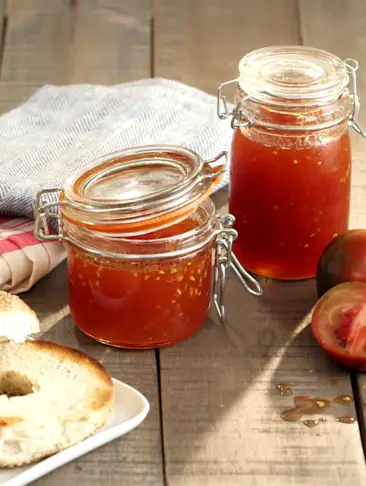
Ensuring Safety and Preventing Foodborne Illness
Understanding Potential Risks
Ensuring food safety is of utmost importance when freezing and preserving food. It is essential to understand the potential risks involved to take appropriate precautions. Bacteria can still grow in frozen food, although at a significantly slower rate. Therefore, it is crucial to properly handle, store, and cook frozen food to prevent foodborne illnesses. Understanding the potential risks and educating yourself on safe practices will help maintain the safety and quality of your frozen and preserved foods.
Safe Handling and Storage Practices
Safe handling and storage practices are essential to prevent foodborne illnesses. Always wash your hands thoroughly before and after handling any food. Keep your freezer clean and organized, regularly checking for any signs of spoilage or freezer burn. Store raw meat, poultry, and fish separately from other foods to avoid cross-contamination. Use separate cutting boards and utensils for raw and cooked food. When in doubt, remember the basic food safety principles of clean, separate, cook, and chill.
Recognizing Signs of Spoilage
Knowing how to recognize the signs of spoilage is essential when dealing with frozen or preserved food. For frozen food, look out for freezer burn, which appears as discolored or dry patches on the food’s surface. While freezer burn does not pose a health risk, it can impact the quality and taste of the food. Additionally, any signs of mold, off-putting odors, or sliminess should be considered indications of spoilage. For preserved food, like canned or pickled items, any bulging lids, leaks, or foul smells should raise a red flag. When in doubt, it is always better to err on the side of caution and discard any food that seems questionable.
Maximizing Flavor and Quality
Maintaining Freshness and Nutritional Value
Maintaining freshness and preserving the nutritional value of your frozen and preserved food is key to ensuring maximum flavor and quality. By freezing food at its peak freshness, you can lock in the flavors and nutrients. Proper packaging and sealing techniques, as discussed earlier, help prevent freezer burn and maintain the food’s quality. When it comes to preserving food using other techniques, be mindful of the freshness of the ingredients you use. Using high-quality, fresh produce and following proper preservation methods will help retain the flavors and nutrients, resulting in delicious and nutritious meals.
Seasoning Techniques for Frozen and Preserved Foods
Frozen and preserved foods may require some additional seasoning to enhance their flavors. When using frozen vegetables, consider adding herbs, spices, or aromatics during the cooking process to infuse them with flavor. Homemade seasonings, such as herb blends or spice mixes, can also be a great addition to frozen proteins or preserved foods. Seasonings and marinades can help bring out the best flavors in these ingredients and make your dishes more enjoyable.
Pairing Frozen and Preserved Ingredients for Optimal Taste
Pairing frozen and preserved ingredients thoughtfully can take your meals to the next level. Combining complementary flavors and textures can create a harmonious and satisfying experience. For example, adding pickled vegetables to a sandwich or salad can provide a tangy and refreshing contrast. Incorporating frozen fruits into homemade yogurt or oatmeal adds a burst of sweetness and natural flavors. By experimenting with different combinations and layering flavors, you can create culinary masterpieces using your frozen and preserved ingredients.
In conclusion, the art of freezing and preserving food is a valuable skill to have in your frugal lifestyle arsenal. By choosing proper containers, labeling and dating, preparing food correctly, and planning meals strategically, you can make the most of your frozen food. Understanding the role of temperature, preventing freezer burn, avoiding texture and flavor changes, and freezing delicate items properly will help you maintain the quality of your frozen food. Optimizing freezer storage space through arrangement techniques, stacking and binning, and utilizing freezer bags and vacuum sealers ensures space efficiency. Safe thawing methods, maintaining quality during thawing and reheating, and adapting recipes for previously frozen ingredients are crucial for enjoying your frozen food safely and with delicious results. Exploring other preservation techniques like canning, pickling, dehydrating, and fermentation allows you to extend the shelf life of various foods and explore new flavors. By properly storing staple ingredients, creating ideal conditions in your pantry, and maximizing shelf life, you can reduce waste and save money. Finding creative uses for leftover ingredients, incorporating frozen proteins, and implementing budget-friendly tips and tricks all contribute to a frugal and delicious lifestyle. Ensuring safety, recognizing signs of spoilage, and maximizing flavor and quality round out the art of freezing and preserving food. So, embrace the art of freezing and preserving food to save money, minimize waste, and savor the flavors and benefits of homemade meals.
